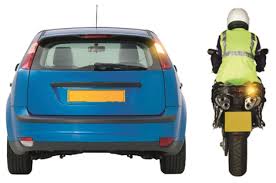Lights
There are three main settings for the headlights on a vehicle, side, dipped and beam. Each setting is used at different times and to some extent for different purposes. As well as the various settings for headlights vehicles will also have fog lights, brake lights and reverse lights.

Side lights: relatively low level lights that allow the vehicle to be seen but do not necessarily assist with the driver’s visibility of the road.
Dipped lights: these lights illuminate the road ahead as well as allow others to clearly see the vehicle..
Beam: high beam is a bright intense light used to light the road further ahead, however it will dazzle other road users as they approach in front of you or as you approach them from behind. When the high beam is active there is normally a warning light visible on the instrument panel.
Many modern cars have auto lights settings meaning the lights will turn on to the correct setting by themselves depending on the light and weather conditions.
Indicators: amber lights that illuminate in a rhythmic pattern at the front and rear of the car (some vehicles with have indicators on the side wing or mirror) to inform other road users of the drivers intended direction

Fog lights: all modern cars must be fitted with at least 1 rear fog light. Front fog lights are not fitted to all cars as standard and are an additional option.
Fog lights (front & rear) must only be used when visibility has been seriously reduced to 100 metres (328 feet) or less. Fog lights can be extremely dangerous if used at any other time as they can dazzle and cause distraction to oncoming vehicles and other drivers.
Brake lights: are activated at the rear of the vehicle when the foot pedal is pressed there will be a brake light on either side of the vehicle with some vehicles having a central brake light. In dark or wet conditions the use of the handbrake instead of the foot brake when stationary will help to reduce glare for the vehicle behind.
Reverse light: a white light is illuminated at the rear of the car when the car is placed into reverse to warn oncoming vehicles of your intention.
